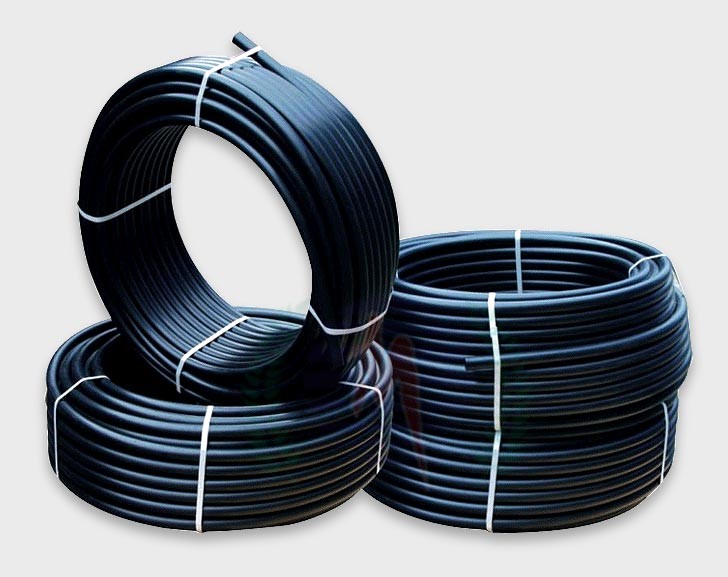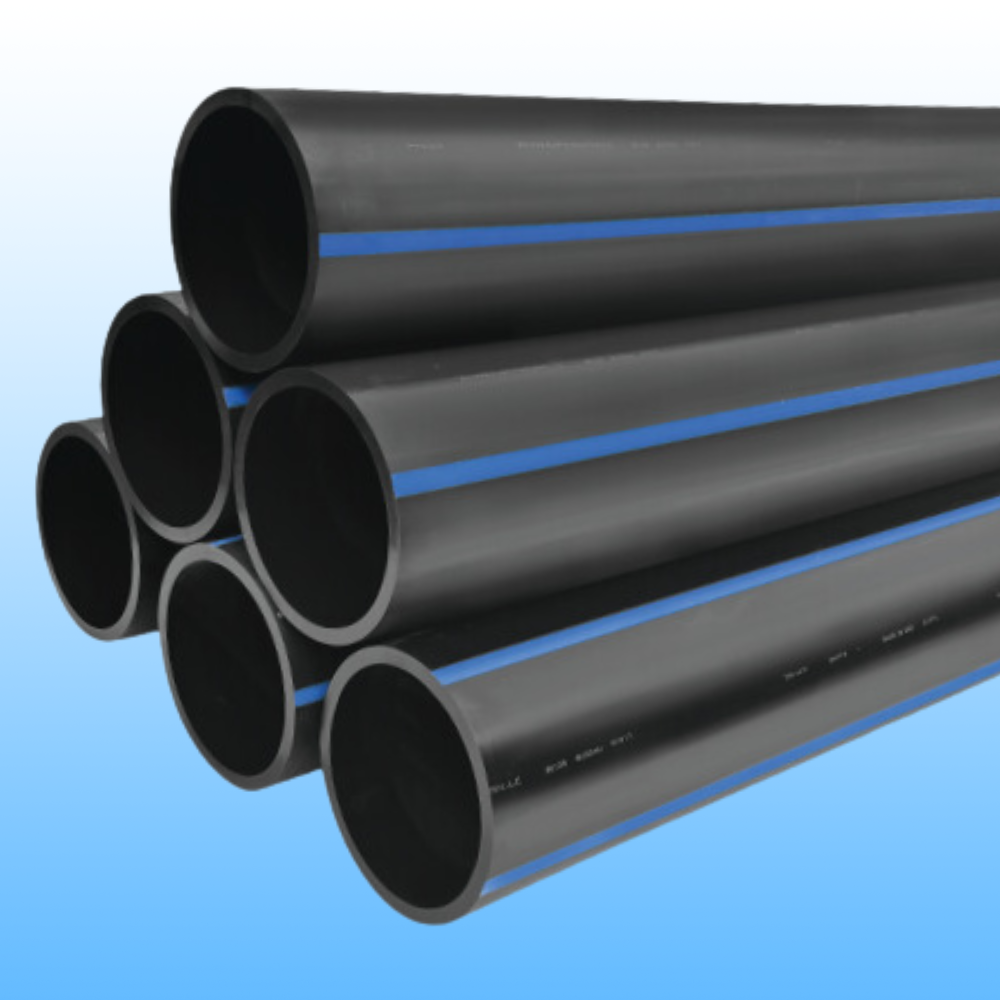Explore the Production Refine Behind High-Quality HDPE Pipeline and Its Applications
The manufacturing procedure of high-grade HDPE pipes is intricate and methodical. It begins with the option of resources that enhance performance. Following this, ethylene undertakes polymerization to create material, which is then formed through extrusion. Quality assurance is vital, making certain that the final item fulfills rigorous standards. The trip of HDPE pipelines does not finish with production. Their applications across various sectors reveal a wider importance worth taking a look at.
Understanding HDPE: Qualities and Advantages

High-density polyethylene (HDPE) is a versatile polycarbonate known for its sturdiness and resistance to numerous environmental factors. This product displays outstanding tensile strength, making it suitable for demanding applications. Its low-density structure adds to a light-weight item, assisting in convenience of taking care of and installation. HDPE also showcases amazing resistance to chemicals, which minimizes destruction when subjected to rough substances.
The material's reduced dampness absorption even more enhances its long life, making it excellent for usage in pipes and storage tanks. In addition, HDPE is resistant to ultraviolet (UV) radiation, guaranteeing that products keep their honesty even when exposed to sunshine. In addition, its adaptability enables for the development of complex forms without endangering stamina. The environmentally friendly nature of HDPE, typically originated from recycled materials, includes in its allure, promoting lasting methods in manufacturing. On the whole, these homes and advantages make HDPE a preferred selection for different industrial and consumer applications.
Basic Material Choice for HDPE Manufacturing
The option of basic materials for HDPE manufacturing is vital to verify the final item fulfills the wanted specs and quality requirements. High-density polyethylene (HDPE) is largely generated from polymerized ethylene, originated from nonrenewable fuel sources such as gas or petroleum. The quality of these feedstocks considerably affects the mechanical and thermal buildings of the final HDPE.
Ingredients likewise play a significant role in boosting HDPE's efficiency, including antioxidants, UV stabilizers, and colorants, which improve longevity and resistance to environmental elements. The choice procedure must think about not just the chemical structure of the raw products but additionally their handling characteristics to guarantee efficient manufacturing.
The sourcing of raw materials need to focus on sustainability and compliance with environmental policies, as liable methods are important in today's market. Eventually, careful resources choice lays the structure for producing top notch HDPE pipelines ideal for diverse applications.
The Extrusion Refine: Forming HDPE Pipe
The extrusion process plays a vital role fit HDPE pipelines, starting with meticulous material prep work methods that guarantee optimal flow and uniformity. Similarly important is the style of the die, which directly affects the last measurements and surface quality of the pipe. With each other, these elements contribute substantially to the performance and top quality of HDPE pipe manufacturing.
Material Preparation Techniques
Effective manufacturing of HDPE pipelines begins with precise product preparation techniques, particularly the extrusion process. Throughout this stage, high-density polyethylene resin is first dried out to eliminate wetness, ensuring ideal circulation characteristics. The resin is after that fed right into the extruder, where it goes through heating and melting, transforming right into a thick state. This heating process is thoroughly managed to maintain the material's stability and efficiency. The molten HDPE is compelled with a die, forming it into a continual pipe kind. Proper temperature monitoring throughout extrusion is important, as it directly affects the product's properties and the end product quality. When formed, the HDPE pipe is cooled down and cut to specified sizes, all set for succeeding handling and applications.
Die Design Value
Precision in die design plays a crucial duty in the extrusion procedure of HDPE pipelines. The die functions as the final shaping tool, straight influencing the pipe's measurements, wall surface thickness, and surface coating. A properly designed die warranties uniform product flow, reducing flaws such as irregularities and weak spots. The geometry of the die must be optimized to fit the specific homes of HDPE, including its viscosity and thermal actions during extrusion. In addition, the cooling price of the material as it travels through the die can significantly influence the pipeline's structural stability. Spending in sophisticated die technology is important for makers aiming to create high-quality HDPE pipes that satisfy market criteria and consumer expectations.
Top Quality Control Steps in HDPE Manufacturing
Although various elements affect the high quality of HDPE pipeline manufacturing, effective quality assurance actions are essential to assure consistency and integrity in the end product. Secret quality assurance practices include strenuous product examination, confirming that the raw polyethylene meets recognized standards for pureness and density. Throughout the extrusion procedure, criteria such as temperature level, stress, and cooling time are closely checked to keep dimensional precision and structural stability
In enhancement, check here post-production screening is important; producers commonly perform hydrostatic examinations to evaluate the pipe's stamina and resistance to stress. Aesthetic inspections for surface defects further improve high quality assurance. Qualification from pertinent criteria organizations, like ASTM or ISO, gives an additional layer of integrity. By applying these detailed top quality control actions, makers can decrease issues, enhance efficiency, and make sure that the HDPE pipes fulfill the particular requirements of different applications, inevitably resulting in consumer fulfillment and rely on the product.
Applications of HDPE Pipe Across Industries
HDPE pipes are used across various industries as a result of their resilience and adaptability. In water circulation systems, they ensure effective shipment, while in wastewater monitoring, they offer reliable options for waste transport. Additionally, agricultural irrigation networks benefit from HDPE's resistance to corrosion and flexibility, making it an excellent selection for modern-day farming methods.

Water Circulation Equipments
A considerable number of sectors rely upon high-density polyethylene (HDPE) pipelines for effective water circulation systems. Known for their toughness and resistance to deterioration, HDPE pipes are extensively made use of in community water system networks, farming watering, and industrial applications. Their light-weight nature facilitates very easy handling and installation, lowering labor prices and time. In addition, HDPE pipes can suit various stress degrees, making them ideal for both reduced and high-pressure systems. American Plastics HDPE Pipe Manufacturing. The versatility of the product permits smooth assimilation right into existing infrastructure, minimizing the demand for substantial excavation. HDPE's resistance to chemical leaching warranties that the water supplied stays safe and tidy, making it an ideal selection for preserving the top quality of drinkable water across different fields.
Wastewater Monitoring Solutions
Effective water distribution systems additionally lead the method for innovative wastewater management remedies, where high-density polyethylene (HDPE) pipes play a substantial function. Popular for their sturdiness and resistance to rust, HDPE pipelines are excellent for delivering wastewater in numerous setups. Their versatility allows for simple setup in complex environments, decreasing the demand for considerable excavation. Furthermore, HDPE's smooth indoor surface reduces rubbing, improving circulation prices and efficiency. These pipes are additionally resistant to chemical leaching, making certain that pollutants do not endanger the surrounding setting. Industries, communities, and therapy facilities progressively count on HDPE pipelines for their dependability and longevity, making them a preferred selection for modern-day wastewater administration systems. This versatility underscores the essential significance of HDPE pipes throughout various applications.
Agricultural Watering Networks
Agricultural watering networks benefit considerably from using high-density polyethylene (HDPE) pipes, which offer reliable and dependable water delivery to plants. HDPE pipes are light-weight, making them easy to deliver and set up, while their adaptability enables different arrangements in diverse surfaces. These pipes show excellent resistance to corrosion, chemicals, and UV radiation, making certain durability in severe agricultural environments. In addition, their smooth indoor surface minimizes friction loss, enhancing water circulation and decreasing energy prices related to pumping. The durability of HDPE pipes, typically going beyond 50 years, contributes to reduce maintenance and replacement costs. Farmers significantly count on HDPE pipes to enhance watering efficiency and advertise sustainable farming techniques, inevitably leading to improved plant returns and resource conservation.

Future Patterns in HDPE Pipe Technology
As the need for sustainable and efficient framework grows, developments in HDPE pipe modern technology are positioned to transform different industries. Emerging fads consist of the integration of wise technologies, such as sensing units and IoT abilities, which help with real-time tracking of pipeline conditions, minimizing upkeep expenses and avoiding leakages. Furthermore, the development of advanced manufacturing strategies, such as 3D printing, is allowing the production of facility, tailored pipe designs that satisfy details project demands.
The emphasis on recycling and round economy techniques is driving the technology of HDPE pipes made from recycled materials, boosting sustainability. Boosted jointing methods, such as electro-fusion and mechanical installations, are likewise boosting setup performance and dependability. Finally, the growing emphasis on ecological laws is pressing suppliers to adopt greener production procedures, ensuring that HDPE pipelines not only meet market standards however additionally foster an even more sustainable future for framework development.
Often Asked Concerns
Just How Does HDPE Contrast to Other Plastic Materials?
HDPE outmatches lots of various other plastic materials relating to durability, chemical resistance, and versatility. Its reduced density and high tensile strength make it suitable for different applications, usually surpassing choices in both efficiency and longevity.
What Are the Ecological Influences of HDPE Manufacturing?
The ecological influences of HDPE manufacturing include greenhouse gas emissions, energy intake, and potential air pollution from producing procedures. In addition, improper disposal can bring about dirt and water contamination, increasing issues regarding lasting environmental results.
Can HDPE Pipeline Be Reused?
Yes, HDPE pipelines can be reused. Many centers accept made use of HDPE for processing, changing it right into brand-new products. This reusing adds to sustainability initiatives, minimizing plastic waste while conserving sources and power in the production cycle.
What Is the Life Expectancy of HDPE Pipes?

How Do Temperature Level Variants Impact HDPE Pipeline Efficiency?
Temperature level variations substantially influence HDPE pipe efficiency, impacting flexibility and toughness. High temperature levels can lead to softening, while low temperatures may create brittleness, ultimately influencing the pipe's toughness and suitability for numerous applications in varied settings.